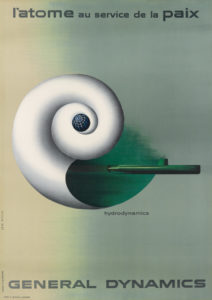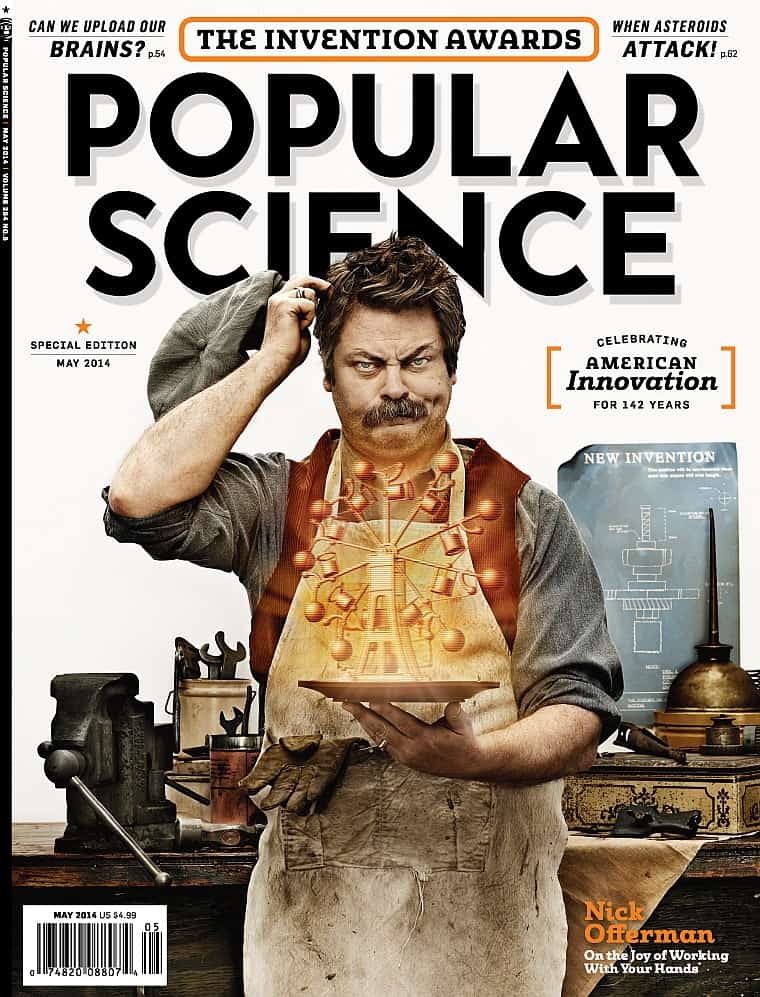For this year’s SynBioBeta conference, Data Collective founder and investor Matt Ocko hosted a panel on Abundance and Scarcity. Matt backs entrepreneurs attacking trillion-dollar problems to “amplify capitalism’s benefits and reduce its costs to society.” In Matt’s own words, his team is creating a future of “abundance, comity, and amity.”
Matt invited artist and storyteller Taryn Southern and me to participate. During the panel, he asked Taryn what she would do with $100 million[1] to promote the positive, exponential technologies now changing the world.
Taryn answered she would first look for creative applications of the technologies, then develop narratives based on desired outcomes. She reminded us technologies must put us and the technology at the center of a Hero’s Journey. Tactically, she said she would create 50 to 100 series and films that tell the stories of technologies for specific audiences. From this collection, Taryn would slice and dice the content into smaller pieces to create a marketing content funnel.
I said if this were the case, I’d join Taryn. Then she said the two of us would work together for The Cause.

The World of Abundance
We are close to living in a world of abundance. The energy, food, information, and materials sectors are being disrupted at unprecedented speed and scale. Access is improving while costs are falling.
But you’d never know it.
That’s because we humans are wired to pay attention to the negative. Our ancestors’ brains evolved a “negativity bias.” Our very survival depended on our ability to avoid danger and respond to it. When we hear a bunch of good news and a little bad, we pay more attention to the bad. It’s just our nature.
The media and politicians understand this. They focus on and leverage our negativity bias to increase clicks, increase revenues, and increase votes. (If you haven’t seen it, take the time now to watch the Netflix documentary The Social Dilemma.) Positive stories don’t sell, or so the popular wisdom goes.
But We’ve Got This
We can, however, make a difference through storytelling and a willingness to leverage negativity bias to tell stories about our abundant futures.
In other words, we can use existing tools and create some of our own to paint a positive vision of the future to help people understand the better world that is just around the corner.
So let’s start with that end in mind: A positive vision of tomorrow. (Several visions. Because there are many possibilities in front of us.)
Since this is ultimately a marketing campaign, that vision, Our Grand Strategy, is our starting point.
Last year, Representative Alexandria Ocasio-Cortez presented her vision for the future were we to enact the Green New Deal. Last week, Naomi Klein presented the sequel – The Years of Repair. These aspirational narratives are examples of what our positive visions of tomorrow could look like.
Our Vision Needs to Be Simple.
We all want a bunch of things. During the panel, I mentioned we could use the $100 million fund to tell stories on how technologies satisfy Maslow’s hierarchy of needs. That starts with clean water and air, food, and shelter—the most basic needs we humans have.
Right now, people are afraid. Afraid of the future. Afraid of the uncertainty. Afraid of politics. And afraid of science and technology.
Our job as storytellers is to counter that fear, by putting people at the center of positive futures and inviting them to come along for the ride. We need to help people see themselves as part of that future.
So, I’d say, “Hey Matt, we’re going to take that money and promote multiple visions. We’ll test our messages in social media, find what people actually care about, and course-correct as needed to make sure our stories resonate.”
We have to do this if we want to build our audience and avoid creating another Quibi-like failure.[2]
Are you with me so far?
Good. We’ve got our vision. Now we can get into our Tactics.
Here are a few:
Create Symbols
Every great brand has a recognizable symbol. Think of Apple’s apple, the Amazon smile, the Nike Swoosh, the red and white Coca Cola logo. They are recognizable everywhere.
We need visual images to associate with our movement(s).
Why?
Because seeing our symbols gives people a sense that something large and well-organized is happening. Logos are tangible; they imbue abstract ideas with reality.
In the 1930s, at the height of the Great Depression, President Franklin Delano Roosevelt, created the American New Deal Agency, also called The Works Progress Administration. One of the WPA’s most famous project, The Federal Project Number One employed musicians, artists, writers, actors and directors. They created thousands of poster designs including several to commemorate the National Parks.

Two years ago, NASA released a series of posters celebrating space tourism. More recently, Green New Deal proponents released a series of posters that reference FDR’s New Deal, specifically, the Works Progress Administration.
These images are important because our subconscious minds think in pictures and posters spark people’s imaginations. They get people talking.
We need images like these to show us the world of tech-driven abundance: A world of precision fermentation breweries surrounded by vast forests. Cities lush with vegetation and solar panels sprouting from rooftops. Kids staring wide-eyed through shop windows at phones growing like tulips.

Our images must be cool enough that kids and teenagers will want to hang them in their rooms. And they need to be available in every format.
Enlist the Next Generation
Taryn mentioned the importance of engaging young people. Of getting them interested in entering the fields that will make our future positive. We’re doing this work to create a better future. For that reason, at least some of our storytelling needs to be aimed at kids.
C16 Biosciences‘ CEO, Shara Ticku, recently told the story of receiving notes from school-aged children. The kids are happy her company is working to preserve the rain forests and save the habitats of orangutans and cheetahs. (C16 brews palm oil in yeast to stop deforestation.)
Kids’ media consumption habits are ever-changing, so our efforts need to include an endless stream of YouTube and Twitch videos. When and if new platforms arise, we need to engage with them quickly.
That means, as Taryn mentioned, putting animated series into production, writing picture and middle grade books, and promoting authors who are doing this work. If we find none, we will commission them.
There are gaps here, opportunities to fill in missing parts of the narrative. I know because I’ve witnessed it first-hand as my sons were growing up and consuming media. In fact, I wrote my Dragons Burn series to get middle graders interested in engineering biology because I only ever came across one reference to biotech in kidlit.
Work With Game Developers
Speaking of kids, we would fail in conveying our message if we did not target game developers. The truth is that U.S. children spend as much time in video games as they do at school. They’re receiving a separate game-driven education in creativity, problem-solving, socialization and collaboration, and critical thinking.
Even before the Age of COVID, the gaming industry was larger than the movie, film, and music industries combined. And now, thanks to the lockdowns, COVID has made nearly everyone a gamer of sorts.
IMHO, if you want to lead the world, you must involve the gaming industry. Its influence is that important.
A few years ago, in her TED Talk, Jane McGonigal suggested gaming could make the world a better place. She said games allow players to be their “best selves.”
Our campaign should target game makers, encouraging them to incorporate our positive messages and visuals. Even if they are just seen in fleeting moments while building that first cabin in Minecraft, riding that meteorite into the Fortnite map, or shooting up the enemy in Call of Duty.
If we don’t get traction, we could always start or even buy a game studio.
Create Podcasts and Courses.
Taryn mentioned the need to create lots of media in many formats. Podcast listenership, for example, continues to grow and needs to be part of the strategy.
A few weeks ago, A16Z investor Vijay Pande noted there was a gap in the marketplace for biotech-focused podcasts. A16Z launched Bio Eats World. This follows SynBioBeta‘s podcast and Ginkgo Bioworks Ferment.tv video series.
We need more of these.
So we will create two kinds – the purely factual like Bio Eats World and Ferment.tv, and fiction audio series like The Message, a fiction series sponsored by General Electric.
COVID is accelerating massive changes in education. Schools and universities have gone virtual. Companies have started to emphasize skills over degrees. Education platforms like Coursera, Udemy, and LinkedIn have seen their user numbers multiply. And we’re only at the beginning of this trend.
As part of our campaign, we will create courses that introduce biotechnology (Biotech for Non-Scientists), bio-manufacturing, clean energy, fermentation, free broadband, etc. But we will develop courses that are a lot more fun and engaging than the usual fare on these platforms.
Hell, we might even create our own platform for these.
Recruit Social Media Influencers

Do you doubt the power of social media?
This past month, a Tiktok creator, Nathan Apodaca, posted a video of riding a longboard to work while drinking a bottle of OceanSpray cranberry juice, and jamming to Fleetwood Mac’s “Dreams.” That brief video from a virtually unknown creator resulted in:
- 4.3 million views in less than 24 hours on TikTok alone; the current view count is more than 25 million views and rising
- Ocean Spray sales through the roof
- Fleetwood Mac’s song in the Top 10 after 40 years (and a copycat video from Mike Fleetwood)
- A new cranberry-colored car for Apodaca from OceanSpray, and
- A copycat video from Ocean Spray’s CEO, Tom Hayes, garnering more than 1.6 million views at the time of this publishing
Other influencers on Tiktok have explained the prevalence of mental health (Dr Julie Smith) and how to make your mask fit better (Dr. Olivia). Bear in mind this platform did not exist in the US just two years ago.
We will recruit social influencers to spread our message.
When I asked my 20-year-old niece Violeta Roth what makes TikTok videos go viral, she told me shock value helps. She sent me an audio clip of suggestions that could’ve been taken from Made to Stick:
Keep it short and straightforward, Elicit curiosity (or shock), Make it concrete, Make it emotional (fun or music-driven), and Tell a story.
Create a Black Opps Team
We want to be successful, right. And to be successful, we need to use all the tools available at our disposal. So, we’ll “borrow” the same tactics used for the 2016 election and are likely being used by the Kremlin-backed Internet Research Agency and the Chinese social media trolls and look for ways to subvert their efforts.
This will require adding more than a few social media experts to our team. It may also require creating an app that will aggregate all of our positive news and allow us to speak directly to users.
Finally, Realize This Will Work
We have a grand vision, our strategy, and a preliminary list of tactics.
But you have to realize all of this is our job. Making content that engages. Connecting people with that content. Building content that attracts people. Creating a community. Serving that community.
That’s our job as storytellers. We must make it visible. And reinforce it through repetition.
Are you ready to go on this journey?
[1] $100 million sounds like a lot of money. But the amount pales in comparison to the billions funneled through think tanks, lobbying groups, public policy organizations, influencers, and political candidates and front groups paid to create doubt and denial. That money has been invested for decades to make the U.S. a more conservative, science-denying, divided place.
[2] TL:DR Quibi is a short-form mobile streaming service that raised $1.75 billion and has failed spectacularly in gaining traction.
